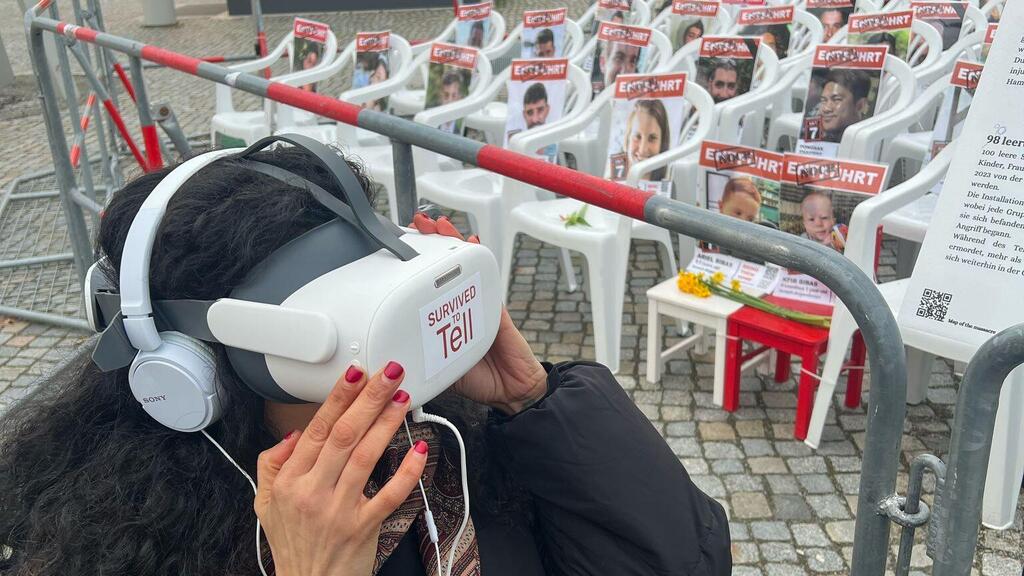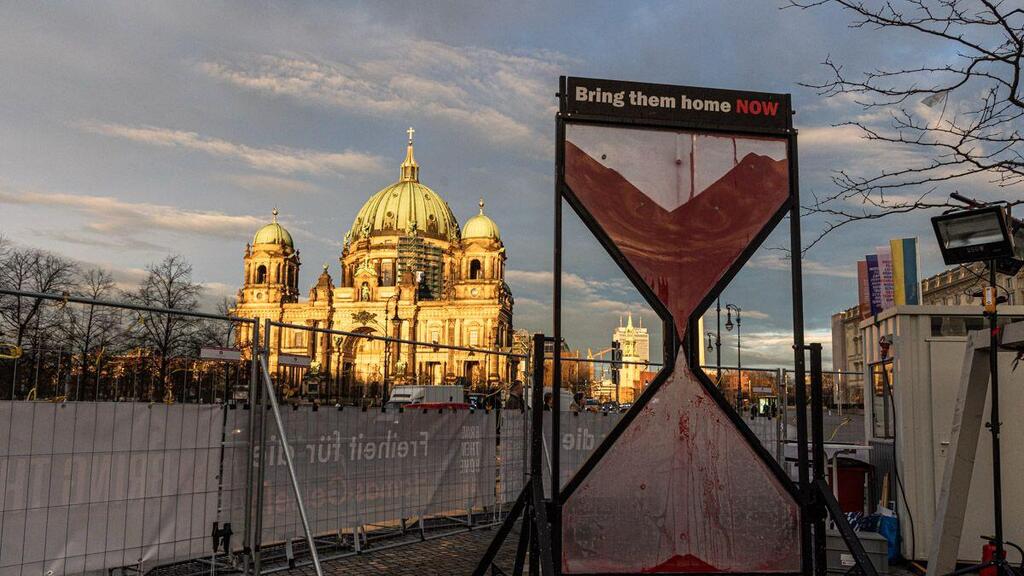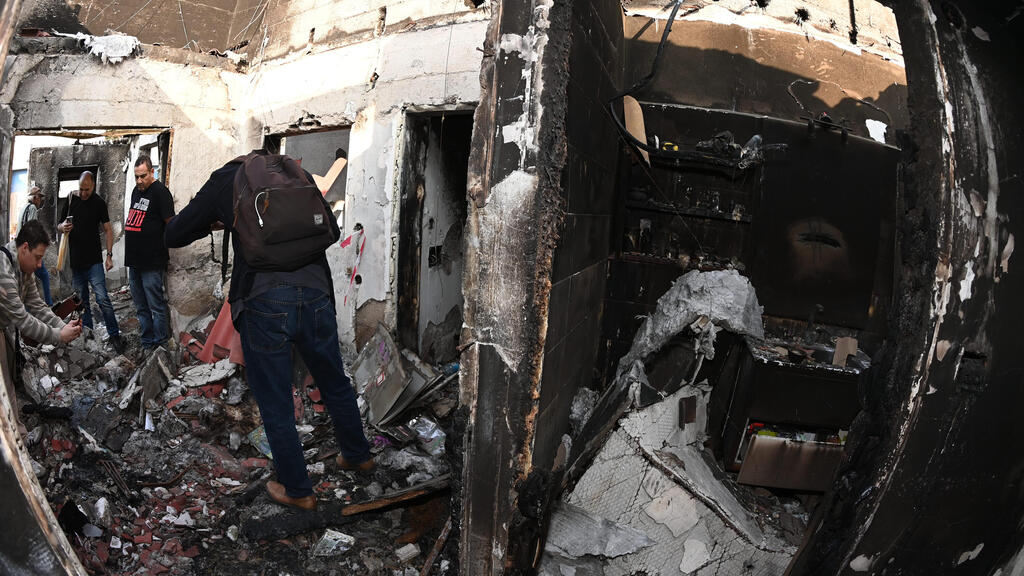A young woman stops suddenly at Babelplatz in Berlin, which has been temporarily transformed into Hostage Square. She hesitates for a brief moment before approaching the stand placed between dozens of empty chairs covered only with the photographs of Israeli hostages held in Gaza. She is given a virtual reality headset and is immediately transported to the Nova music festival where revelers are dancing in the open fields near Kibbutz Reim.
Suddenly the music is interrupted by rocket sirens. The woman looks around as her anxiety grows, she is shaking uncontrollably. She sees masked men nearing her, there is gunfire, screams and blood. Young boys and girls, men and women who were dancing happily to the music just seconds earlier, are now running terrified, frantically trying to find somewhere to hide, as terrorists surround them and open fire.
The woman removes the headset after only 20 seconds. She is pale and shaken. "I did not know," she mumbles. "I did not know it was like that," she says.
"The events of the Hamas massacre on Oct. 7 cannot only be an internal Israeli discussion. We have to make sure this is seen and heard all around the world," says Omer Zimmerman, head of the non-profit ISRAEL-is an advocacy group that has taken on the challenge of combating anti-Israel sentiment, and improving its image globally.
Since Oct. 7, their mission has taken on an urgency. Now, with the use of VR, they can present to anyone who is interested in learning about the events that took place on that day, stories of survival and heroism.
"We've prepared five stories of heroism and survival, says Omer Zimmerman, ISRAEL-is global affairs chief. We've created clips that enable viewers to feel like they are taking part in the events," he says. "They can see abductions from the border communities and the music festival, battles with the terrorists and are even taken into the blood-stained homes where the terrorists had committed their atrocities and massacred the residents." The clips are presented with the sounds and sights of the horrific events.
Zimmerman says there are two versions to each story, one less difficult to watch but even the more moderated version brings the reality of what had happened to life.
Julia Schmidt, a German pro-Israel activist is behind the initiative. "The special connection that Germans have to Israel is not only because of their history. It is also because of the danger to Jews and Israelis on the streets of Berlin and all over Germany, today," she says. "It is crucially important to show people that the pro-Palestinian narrative that has been spread in Berlin about Israel and Israelis, is false."
Choosing Babelplatz to host the event was not by chance. In 1933 the Nazis burned over 20,000 books that they deemed contrary to the German spirit. In its center, Israeli artist Micha Ulman built an underground chamber showing a library empty of its books.
"Locating Berlin's hostage square at Babelplatz is a warning that what was true in 1933, is true today, after the dramatic rise in antisemitism around the world," the organizers say.
Get the Ynetnews app on your smartphone: Google Play: https://bit.ly/4eJ37pE | Apple App Store: https://bit.ly/3ZL7iNv
They built a tunnel to demonstrate the conditions in which the hostages are being held, they have an hourglass showing time running out for the hostages, and empty chairs representing those who are still captive in the hands of Hamas.
"There are still those in Germany who deny the massacre," Schmidt says. "People must see with their own eyes the cruelty that we are talking about."




